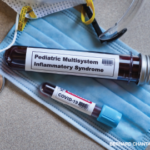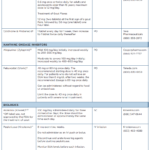A EULAR 2022 abstract session looked at several studies that seek to increase understanding of RA pathogenesis & identify patients at risk for disease progression.


A EULAR 2022 abstract session looked at several studies that seek to increase understanding of RA pathogenesis & identify patients at risk for disease progression.
Background & Objectives Worldwide, osteoarthritis (OA) is a highly prevalent, chronic joint disease that causes pain, disability and loss of function. Global trends demonstrated an increase of more than 100% in years lived with disability due to OA from 1990 to 2019. However, no nonsurgical intervention exists to prevent, halt or even delay OA progression….

Safety considerations and data sources are crucial to consider when designing studies for rheumatology treatments, according to presenters at the 2022 ACR-FDA Summit.

Brian L.P. Dizon, MD, PhD, & Sangeeta Sule, MD, PhD |
During the peak of the coronavirus pandemic in Washington, D.C., we were asked to evaluate a 14-year-old boy admitted to the pediatric hospitalist service. He had been healthy until two weeks before, when he noted a sore throat, and soon after he developed fevers and rashes without congestion, shortness of breath, conjunctivitis or swollen lymph…

Megan Milne, MD, & Rebecca E. Sadun, MD, PhD |
The 1999 Institute of Medicine report To Err Is Human gave a sobering depiction of the magnitude and consequences of medical error.1 The report concluded that approximately 98,000 people die in hospitals annually due to preventable medical errors. Of all the errors detailed in this report, diagnostic errors have since been determined to be the…

The research presented at ACR Convergence 2021 had a broad scope. Below are details on three studies that addressed cardiovascular safety in treat-to-target strategies, phase 2 study results on the efficacy of tigulixostat and the impact of patient preference on treatment adherence. Take our quiz after you read this article. Treat to Target Abstract L06:…

Mary Choy, PharmD, BCGP, FASHP |
Over the past few years, biosimilars and other new drugs have been introduced to treat rheumatic illnesses. Some of the conditions we treat have numerous drug options; others have few or only off-label options. This series, Rheumatology Drugs at a Glance, provides streamlined information on the administration of biologic, biosimilar and other medications used to…

Mary Choy, PharmD, BCGP, FASHP |
Gout affects more than 9.2 million adults in the U.S. and is the most common form of inflammatory arthritis. This condition and its complications are painful and potentially disabling with varying risk factors. It is characterized by symptoms that are usually sudden, with intense episodes of painful swelling in one or more joints, most often…

A larger proportion of patients with gout had a therapeutic response at six months when treated with methotrexate and pegloticase than with pegloticase alone, according to results from the multi-center, open-label MIRROR (methotrexate to increase response rates in patients with uncontrolled gout receiving KRYSTEXXA) study, recently published in the Journal of Rheumatology.1 The MIRROR study…

A soon-to-be published guideline from the ACR and the Vasculitis Foundation on Kawasaki disease underscores the importance of early diagnosis and intensified treatment for people with this serious condition.1 Intravenous immunoglobulin (IVIG) remains the treatment mainstay, and prompt, aggressive treatment may be able to reduce the risk of serious complications in some patients. The guideline…